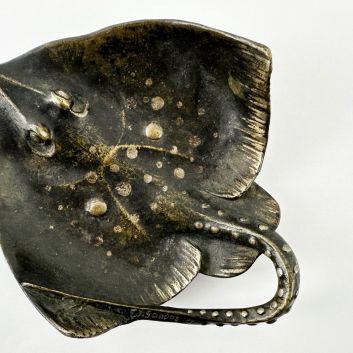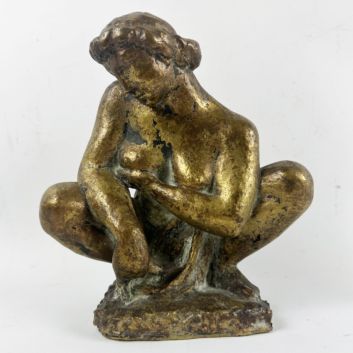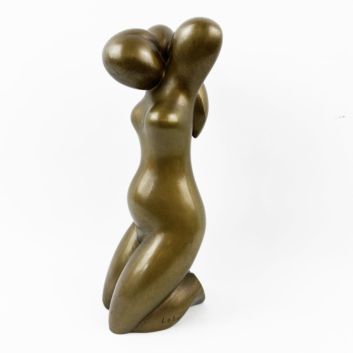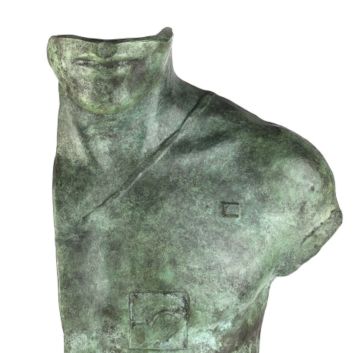Rating and value of sculptures and bronzes by Mahmoud Mokhtar
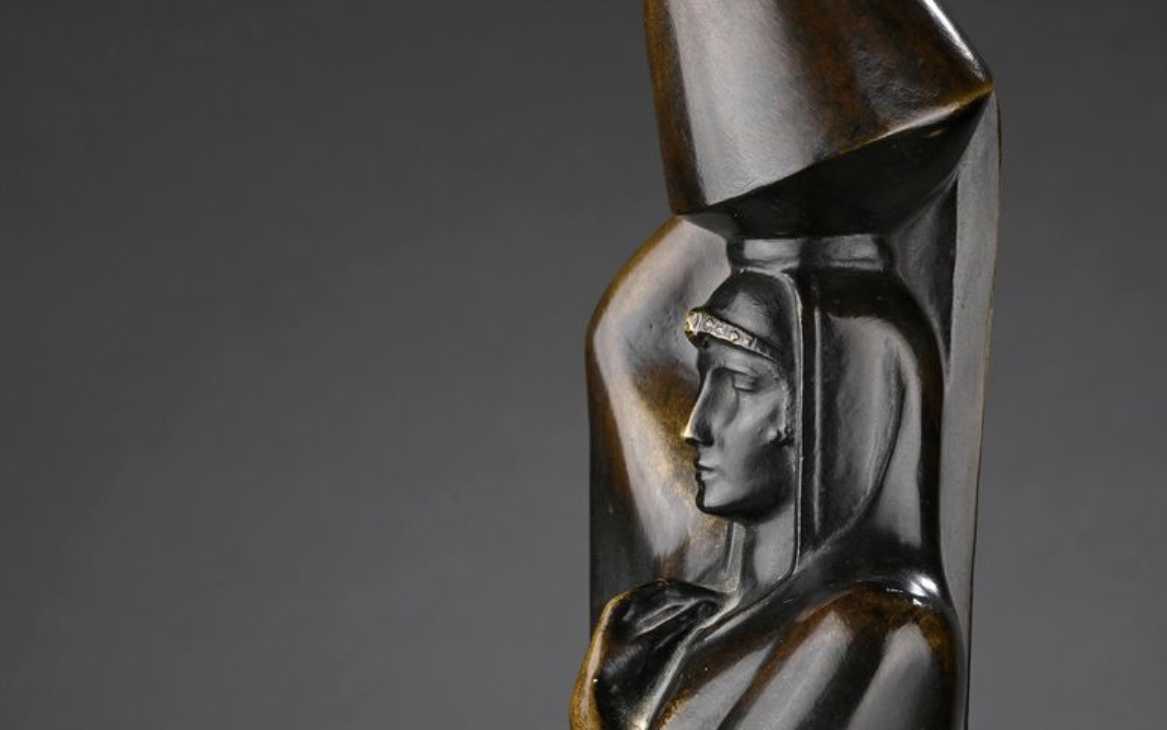
If you own a work by or after Mahmoud Mokhtar and would like to know its value, our state-approved experts and auctioneers will be happy to offer you their appraisal services.
Our specialists will carry out a free appraisal of your work, and provide you with a precise estimate of its current market value.
Then, if you want to sell your work, we'll point you in the right direction to get the best possible price for it.
Rating and value of works by Mahmoud Mokhtar
Mahmoud Mokhtar has produced unique sculptures and furniture. Nowadays, prices for these creations can rise considerably under the auctioneer's hammer. His sculptures are particularly prized by buyers from all over the world.
The price at which they are selling on the art market ranges from €8,000 to €759,000 at the moment, a substantial difference but one that says a lot about the value that can be attributed to Mahmoud Mokhtar's works.
In 2016, his bronze Au bord du Nil, dating from 1920, sold for €759,000, originally estimated at between €150,000 and €220,000.
Order of value from the most basic to the most prestigious
Technique used | Results |
|---|---|
Terracotta | From €8,000 to €45,000 |
Marble | From €18,800 to €503,800 |
Bronze | From €16,900 to €759,000 |
Response in less than 24h
Style and technique of artist Mahmoud Mokhtar
Mahmoud Mokhtar's style is characterized by a wide variety of influences. Through his work, he achieves a synthesis between tradition and modernity, fusing the heritage of ancient Egyptian sculpture with the influences of European modernism.
Born in Egypt, he draws his inspiration from Pharaonic iconography, reinterpreting fairly pure forms and hieratic poses in a sculptural language that can be described as contemporary. His work reflects a balance between monumentality and expressiveness, giving it a timeless force.
When it comes to working with materials and mastering volume, he prefers noble materials such as granite, bronze and stone - reminiscent of ancient Egyptian sculpture.
The modeling is smooth and precise, with a concern for formal clarity that enables the artist to highlight the internal structure of the figures. The artist works on contrasts between solid masses and fluid lines, creating a harmony between solidity and movement.
His inspiration lies somewhere between nationalism and symbolism, as he inscribes his art in the revival of identity in post-colonial Egypt - highlighting emblematic figures of the peasantry and patriotism.
His work often features peasants, workers or allegories of independence, enabling him to inscribe his work in a discourse that is both political and social.
The simplicity of his subjects, combined with the contemporary nature of his compositions, reinforces the emotional impact of his iconography, which is rooted in Egypt's collective memory.
Mahmoud Mokhtar exerted a certain influence on modern sculpture, establishing himself as a pioneer of modern sculpture in Egypt, and paving the way for a generation of artists who wished to reconcile tradition and modernity.
His work, at the crossroads of classicism and artistic nationalism, remains an essential reference in contemporary Egyptian sculpture.
Thus, thanks to his synthetic style and his attachment to Egyptian identity, Mokhtar creates a sculptural aesthetic that is rooted in history and resolutely forward-looking. His work marks a decisive stage in the evolution of modern sculpture in Egypt and beyond.

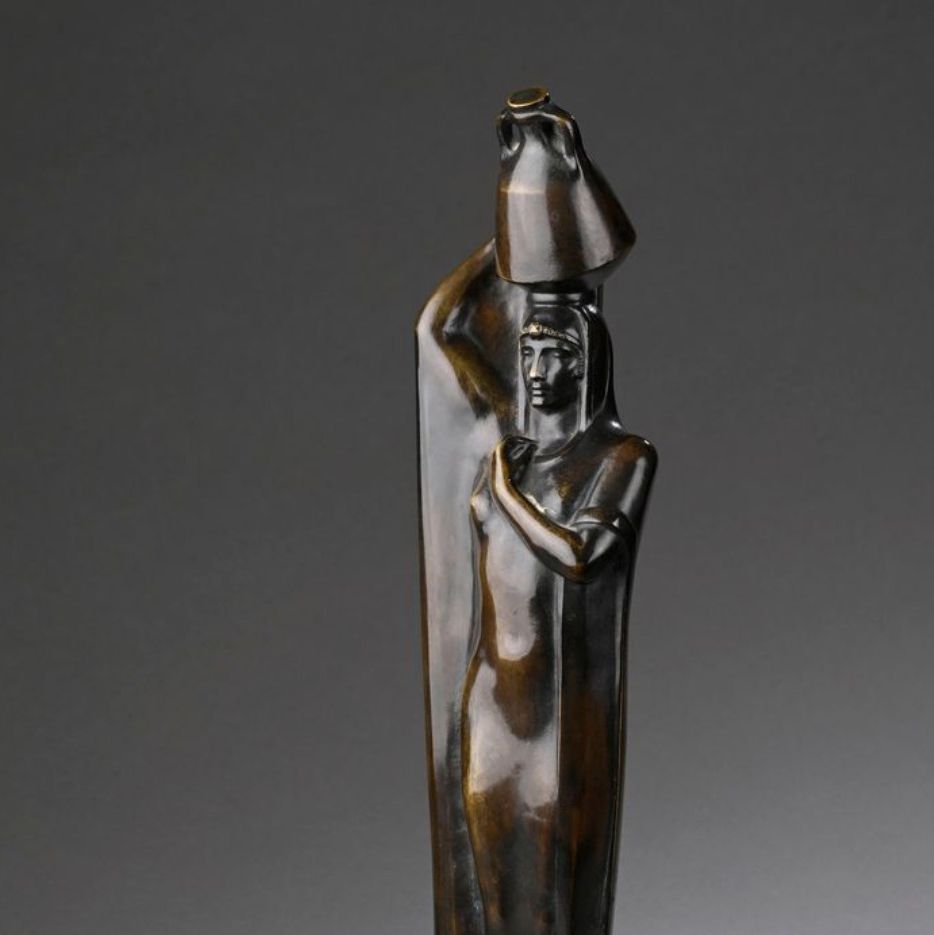
Mahmoud Mokhtar's career
Mahmoud Mokhtar (1891 - 1934) was an Egyptian sculptor who left his mark on his era.
Born in Tanis, Egypt, he began his career as a sculptor at a time when modern Egyptian art was beginning to emerge.
He spent his childhood in a village on the Nile delta, immersing himself in traditional Egyptian culture and iconography, two factors that would have a lasting influence on his work.
In 1908, he began his artistic training at the Beaux-Arts in Cairo, the country's leading art institution, where he quickly attracted attention for his talent in sculpture.
Prince Youssef Kamal took him under his wing, and helped him study in Paris in 1911, where he entered the École nationale supérieure des Beaux-Arts, taking in the contributions of Maillol, Bourdelle and Rodin.
His artistic rise was rapid, and by 1913 he was making a name for himself with sculptures influenced by ancient Egyptian statuary and the modernist trends with which he became familiar in Paris.
In 1920, he presented La Porteuse d'eau, one of his most emblematic works, a synthesis of his attachment to the Egyptian people and his quest for a national art form.
Later, he became officially involved in the Egyptian nationalist movement with his sculpture Nahdat Misr (The Renaissance of Egypt), a monumental sculpture inaugurated in 1928 and instantly seen as a symbol of the country's modernization.
From this time onwards, Mahmoud Mokhtar received numerous official commissions and became one of the first artists to embody a modern Egyptian artistic identity on the international scene.
In the final years of his career, Mokhtar continued to work between France and Egypt, perfecting his sculptural language and gaining increasing recognition.
The artist died in 1943, aged 43, leaving behind a substantial body of work that would have a lasting influence on modern Egyptian sculpture.
After his death, his studio became a museum in his honor, and his influence would continue through many generations of Egyptian artists.
Consequently, Mahmoud Mokhtar's career embodies the transition between modernity and tradition in Egyptian art. His artistic and nationalist commitment helped shape a new sculptural identity for twentieth-century Egypt, making him a founding figure of modern sculpture, at least for this region of the world.
Focus on Nahdat Misr (The Renaissance of Egypt), 1928, Mahmoud Mokhtar
Mahmoud Mokhtar created this sculpture on commission from the Egyptian government. His formal approach and composition differ from his other works.
In fact, it's a monumental sculpture in pink granite, several meters high, located in Cairo. The composition is balanced with a strong verticality. An Egyptian peasant lifts the veil of a sphinx - a symbol of the country's ancient heritage.
There is a contrast between the stability of the sphinx and the movement of the fellah, who raises his head and stretches out his arm, expressing a dynamic of emancipation.
This statue was commissioned in a context of post-colonial Egyptian nationalism, following the 1919 Revolution against British occupation. The work expresses the idea of national renewal, drawing on Egypt's dual heritage, combining both Pharaonic grandeur and the strength of the contemporary people.
The sculpture is intended to symbolize Egypt's modernization and resurgence on the international stage.
Mahmoud Mokhtar chose pink granite for his sculpture, a material with a direct link to ancient Egyptian statuary, giving the work a certain aura of timelessness.
The finishes are precise, particularly in the treatment of clothing and volumes, reminiscent of classical statuary yet rooted in a modernist approach. The sculpture is smooth and uncluttered, emphasizing essential forms rather than superfluous details.
Nahdat Misr thus became a founding work of modern Egyptian sculpture, and a strong visual landmark for future generations. The style of this work influenced Egyptian sculptors seeking a synthesis between the tradition of their roots and the modernity of sculpture.
Even today, the work remains a symbol of national pride and a milestone in Egyptian public art history.
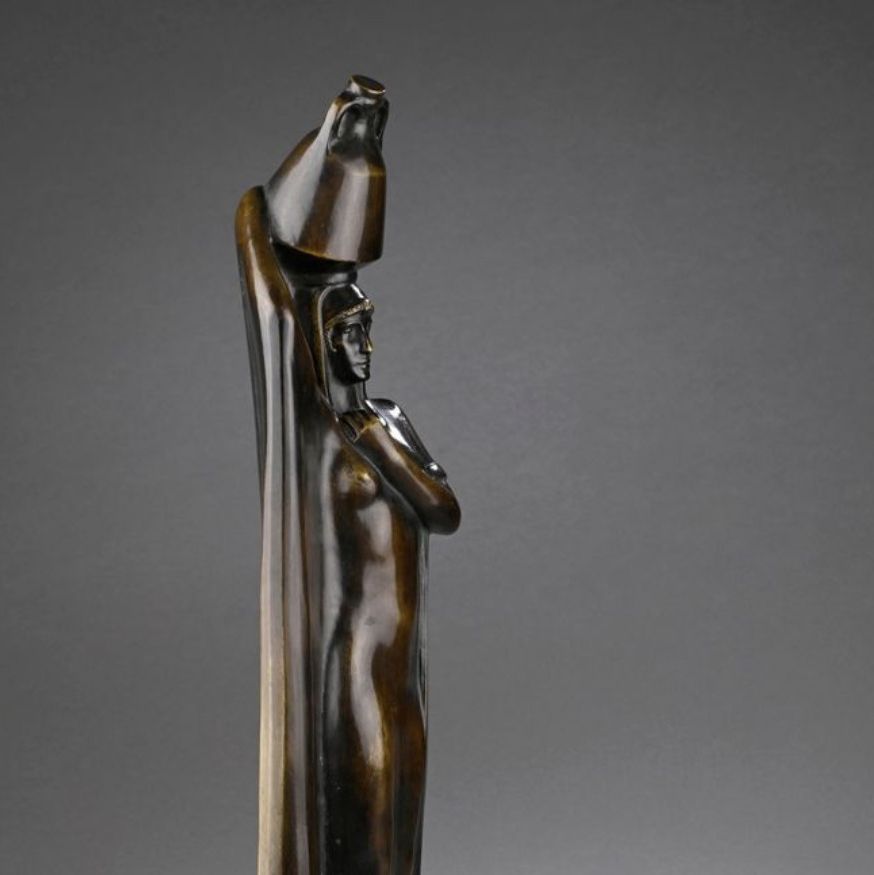
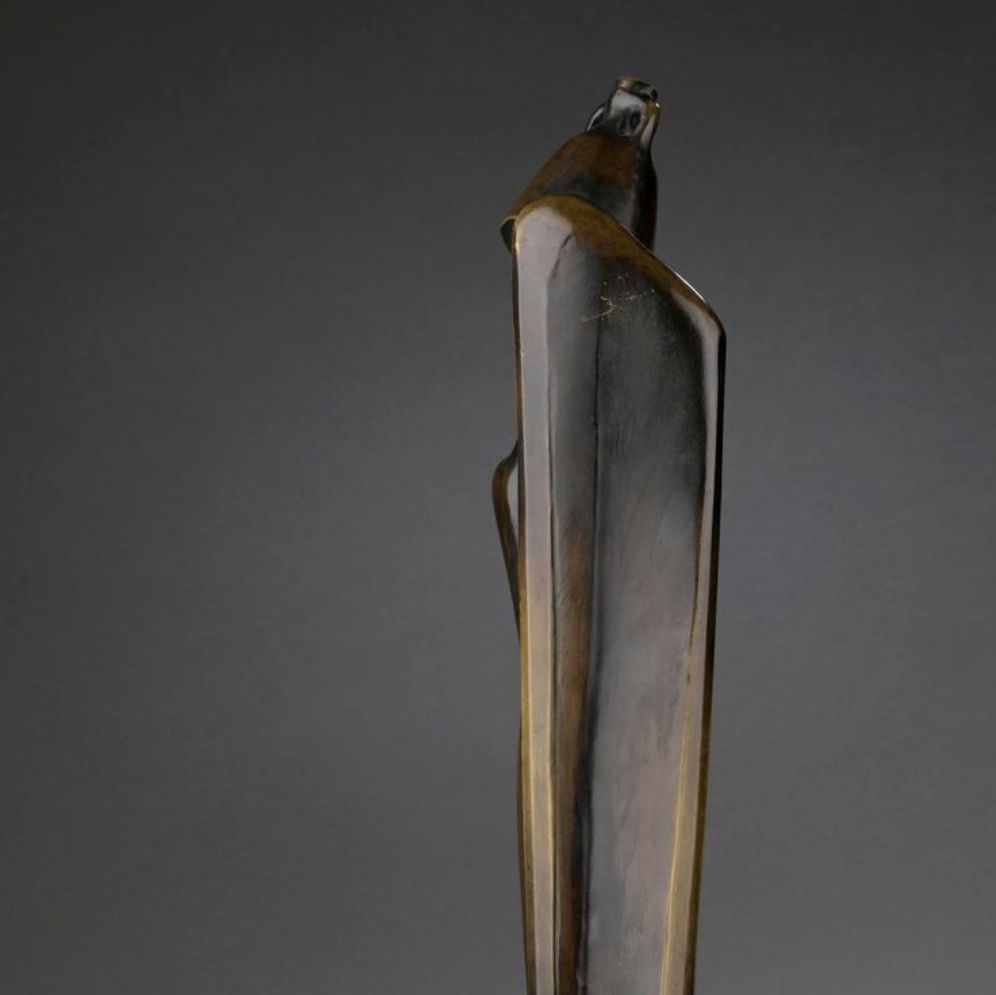
Successful Egyptian sculpture auction
Over the past two decades, Egyptian sculpture has enjoyed increasing appreciation at auction. Modern works by Mahmoud Mokhtar, Adam Henein and Abdel Hadi El-Gazzar have seen their value on the art market rise.
Works by Mahmoud Mokhtar in particular are top sellers, and his bronzes fetch high prices. The low output of modern Egyptian sculptures, combined with their historical importance, makes them particularly sought-after by collectors and institutions.
These works are attracting international interest, with buyers in Europe and the Middle East increasingly interested in these iconic pieces - establishing themselves as key segments of the art market.
Recognizing Mahmoud Mokhtar's signature
Mahmoud Mokhtar doesn't always sign his works. If you think you own one, it's best to have it appraised.
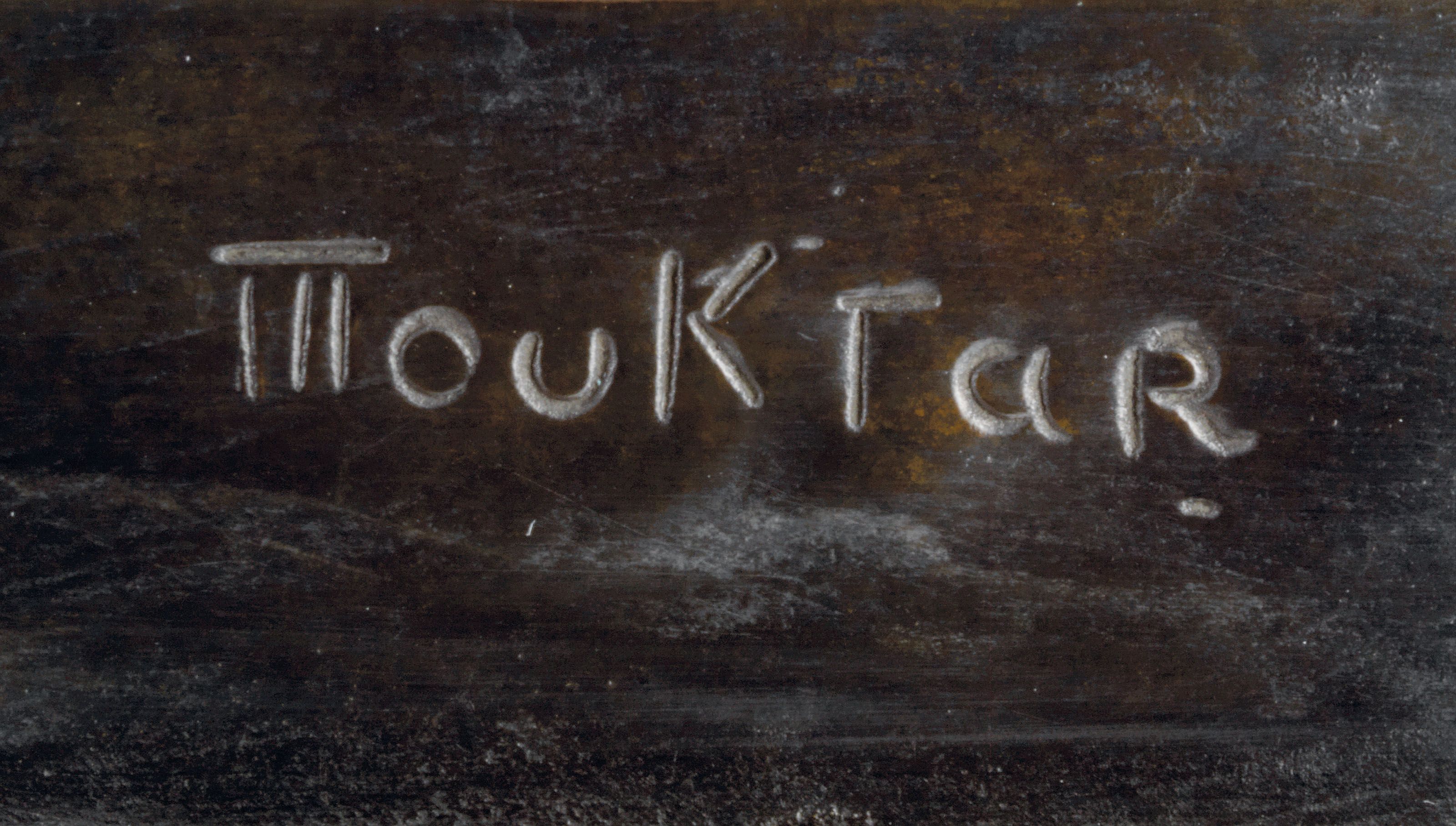
Appraising your property
If you own a painting by Mahmoud Mokhtar, please feel free to request a free appraisal by filling in our online form.
A member of our team of experts and certified auctioneers will contact you to provide an estimate of the market value of your work.
If you are considering selling your work, our specialists will also guide you through the various alternatives available to obtain the best possible price, taking into account market trends and the specific features of each work.
Response in less than 24h
Related topics
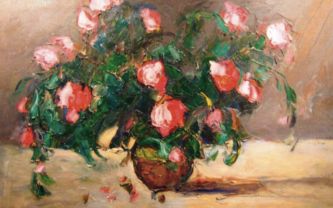
Rating and value 2024 of paintings by Vlad...
Vladimir Terlikowski is a twentieth-century Polish painter whose works are highly valued at auction.
Read more >

Cote et valeur 2024 des tableaux de Louis Valtat
Louis Valtat is a Fauvist painter who produced many paintings that are highly valued on the auction market.
Read more >

Cote et valeur des sculptures et dessins de Jane Poupelet
Jane Poupelet a travaillé la sculpture animalière et a été active au début du XXème siècle. Aujourd'hui, ses oeuvres ont de la valeur sur le marché.
Read more >
Secure site, anonymity preserved
State-approved auctioneer and expert
Free, certified estimates
